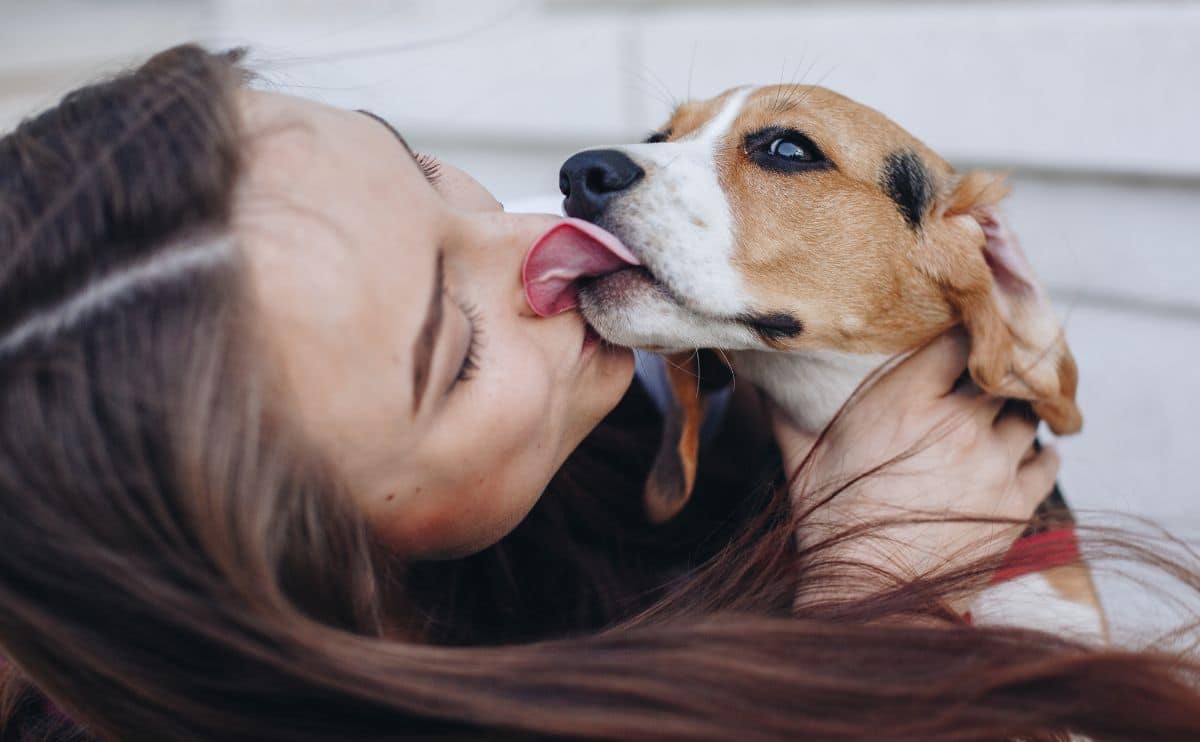Why Are Women & Dogs Practically Soulmates? Science Explains
When you purchase through links on our site, we may earn a commission. Here’s how it works.
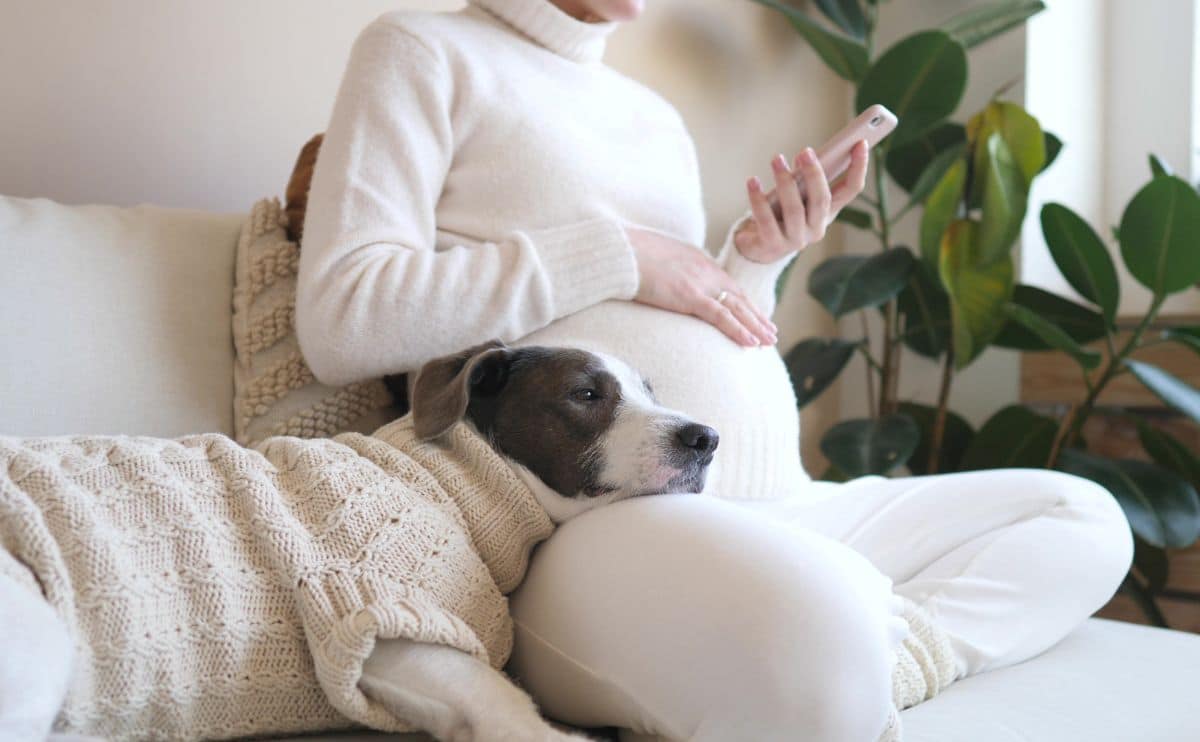
Women and dogs share a bond so tight it could make some human relationships look questionable. This isn’t breaking news to husbands or boyfriends who’ve been exiled to the couch while the dog sprawls luxuriously across his side of the bed. It’s a connection built on companionship, trust, and, let’s be honest, a fair amount of soft baby talk and treat bribes.
Table of Contents
But it wasn’t always this way. A couple of hundred years ago, when prairie skirts weren’t just a fleeting fashion trend, dogs had a different role. They rose before dawn, trotted off with men to hunt, herd, or haul, and returned home on tired legs to sleep in the barn – if they were lucky, maybe by the fire. They were workers first, companions second.
Fast-forward to today, and the dynamic has shifted dramatically. Dogs are no longer just helpers; they’re family. They offer exercise motivation, stress relief, unwavering loyalty, and an uncanny ability to sense when you need comfort (or when you’ve opened a bag of snacks). Women, in particular, form deep emotional connections with their pups. They treat them as trusted confidants, protectors, and even surrogate children.
So, what is it about women and dogs that makes this bond so special? Is it true that a man’s best friend might actually belong to a woman? Let’s take a closer look at the science, history, and heartwarming reality behind this unbreakable connection.
5 Stories Of Famous Women & Their Dogs
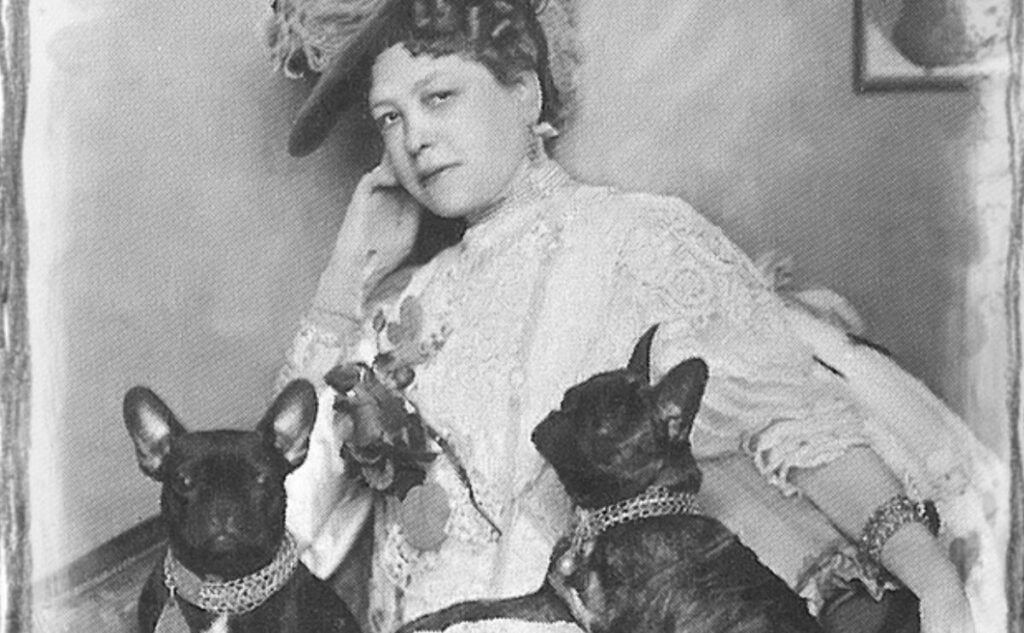
Throughout history, many influential women have shared deep connections with their dogs, relying on them for companionship, comfort, and even inspiration. From world leaders to Hollywood icons, these women and their beloved pets prove that the bond between a woman and her dog is truly timeless. Let’s discover their remarkable stories.
1. Queen Elizabeth II & Her Corgis
Few public figures are as closely associated with their dogs as Queen Elizabeth II. Her love for Pembroke Welsh Corgis began in childhood. Over her lifetime, she owned more than 30 of them. Her dogs were more than just pets. They were part of royal life, often trotting alongside her at Buckingham Palace and Windsor Castle. The Queen’s devotion to her Corgis was well-documented, and she was known to care for them, even feeding them herself personally. Her lifelong love for the breed cemented Corgis as a symbol of royalty and charm.
2. Audrey Hepburn & Mr. Famous
Classic Hollywood star Audrey Hepburn had a deep affection for animals, but one of her most famous companions was a Yorkshire Terrier named Mr. Famous. The tiny dog was frequently seen by Hepburn’s side and even made an appearance in one of her films. Hepburn credited Mr. Famous with bringing her joy and companionship, especially during the loneliness of Hollywood life. Her love for animals extended beyond her own pets – she later became an advocate for animal welfare and worked with various rescue organizations.
3. Frida Kahlo & Her Xoloitzcuintlis
Mexican artist Frida Kahlo had a unique love for animals, especially the rare and ancient Xoloitzcuintli, also known as the Mexican Hairless Dog. She owned several Xolos, which frequently appeared in her artwork, symbolizing protection and heritage. Kahlo viewed her dogs as spiritual guides, providing her with emotional support during her lifelong struggles with chronic pain and illness. Her home, Casa Azul, was a sanctuary for her beloved pets, where they roamed freely and were deeply cherished.
4. Florence Nightingale & Her Sheepdog, Cap
Florence Nightingale, the founder of modern nursing, was known for her compassion not only toward humans but also toward animals. During her time revolutionizing healthcare, she found solace in the companionship of her Sheepdog, Cap, who she rescued. Nightingale believed that animals played an essential role in healing and often recommended pet companionship for patients recovering from illness. Her views foreshadowed modern pet therapy, which is now widely recognized for its benefits in reducing stress and promoting emotional well-being.
5. Helen Keller
Helen Keller’s love for dogs was well-documented, and her bond with them extended beyond companionship. They were an integral part of her life, providing her with comfort, connection, and a sense of security. The Japanese government gifted her a young Akita puppy, making Keller the first person to bring an Akita to America. She immediately fell in love with him, describing him as “gentle, companionable, and courageous.”
Sadly, the pup passed away from illness at just seven months old, leaving Keller heartbroken. Recognizing her deep love for the breed, the Japanese government later sent her another Akita as a second gift. Keller also had other beloved dogs throughout her life. She owned a Boston Terrier named Sir Thomas (“Phiz”), one of her favorite companions. The Boston Terrier’s affectionate and intelligent personality made him a perfect match for Keller’s needs. She also had a Bullmastiff named Lioness, a breed known for its protective and gentle nature.
Beyond her personal connection with dogs, Keller was an advocate for animal rights. She believed in treating animals with kindness and respect and often spoke about the emotional and therapeutic benefits they provide. Her writings reflected her deep understanding of the human-animal bond, emphasizing that dogs, in particular, could bridge gaps in communication and offer profound emotional support.
6 Benefits Of Dog Ownership For Women
Before I get into the science behind why dogs bond with women closely, let’s take a look at the benefits of dog ownership for women.
1. Dogs Offer Women Protection

Dogs can be very beneficial to women in helping them feel safe. We live in a changing world where women can take on any challenge they choose. However, there is still a risk of feeling unsafe when doing things alone. Dogs can help bridge that gap and give women the sense of protection they need. For example, hiking, biking, walking, camping, and even living alone are all situations in which women may feel unsure or unsafe. A protective dog helps keep unwanted people away so a woman can feel safe when alone. Dogs offer protection to women in the following ways:
- Protection at home by watching for threats and strangers
- Deterrent with physical appearance
- Protection in public spaces
- Active protection and alarm when in a dangerous situation
- Dogs will wake you to fire, intruders, or other threats in the night
- Canines sense danger long before humans are aware of it
- Dogs do not fear for themselves when protecting their owners
Breeds like American Pitbull Terriers, Belgian Malinois, Boxers, Bernese Mountain Dogs, Bullmastiffs, Doberman Pinschers, German Shepherds, Great Danes, Rottweilers, Labrador Retrievers, and Siberian Huskies are good choices for protective dogs for women. Of course, any breed of dog can be a perfect companion and watchdog, depending on the individual situation.
2. Dogs Offer Emotional Boost For Women

Having pets has proven emotional benefits for humans. Having a dog can help an owner feel less lonely, feel supported, provide companionship, improve our mood, and even boost physical health. Dogs provide company for people who spend a lot of time alone, need emotional support, or are older and need more focus. People who own pets are less likely to suffer from depression, often have lower blood pressure in stressful circumstances, and are more physically active.
Pets offer stress relief and emotional support through companionship. Women with dogs tend to feel less lonely, as dogs provide constant companionship and unconditional love. Dogs are often very sensitive to emotional changes in their owners. Many will come and cuddle when a person is upset, crying, or seems down. Emotional support dogs and therapy dogs are increasingly used to help women dealing with trauma, PTSD, or major life changes. Dogs are often highly sensitive to hormonal changes in women, especially when a woman becomes pregnant.
3. Better Physical Health For Women
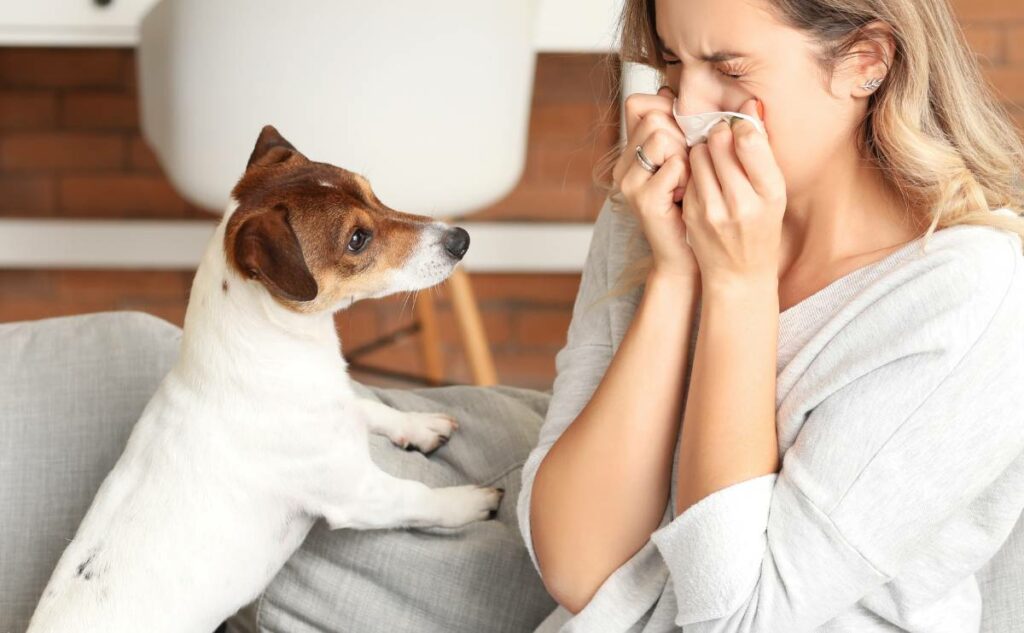
Research has shown that people who own pets often have lower cholesterol and triglyceride levels than those who do not. Whether it’s a casual walk or a run in the park, dogs provide an incentive to stay active, reducing the risk of obesity, heart disease, and high blood pressure. Walking a dog ensures more time outside, which can boost vitamin D levels and improve mood. A study in BMC Public Health found that dog owners walk an average of 22 more minutes per day than non-dog owners.
4. Dogs Can Help With Recovery

Patients recovering from heart attacks who have pets often survive longer than those who do not. Interacting with a pet elevates dopamine and serotonin levels in the brain, contributing to relaxation and a better mood. Research has shown benefits to Alzheimer’s patients, helping ease aggression, anxiety, and stress. The same goes for dogs assisting with mental health recovery.
5. Enhanced Social Life & Relationships

Dogs are natural icebreakers, making it easier for women to connect with others in their communities. Having a dog often sparks conversations and interactions that might not happen otherwise, whether at the dog park, on a walk, or at pet-friendly events. Studies suggest that people are more likely to approach and talk to someone with a dog, which can lead to new friendships or even romantic relationships.
Additionally, dog ownership creates built-in social opportunities, such as training classes, neighborhood pet meetups, and online pet communities, allowing women to connect with like-minded individuals. For those who live alone, dogs also provide a constant source of companionship, easing loneliness and offering emotional support. Their presence can help women feel more socially engaged, even on days when human interaction is minimal.
6. Support During Major Life Changes

Life is full of transitions, and dogs can provide unwavering support during some of the most challenging times. Whether coping with a breakup, job loss, or the death of a loved one, many women find comfort in their dog’s presence. Research shows that interacting with dogs increases oxytocin levels, which can help alleviate feelings of sadness, loneliness, and stress. Their consistent companionship offers a sense of stability during periods of uncertainty, making it easier to navigate difficult changes.
For women moving to a new city or adjusting to a major life shift, a dog serves as a familiar source of love and routine, providing emotional grounding when everything else feels uncertain. Unlike human relationships, which can be unpredictable, a dog’s loyalty is constant, offering silent but powerful reassurance that someone is always there.
Scientific Insights Into The Human-Dog Bond
The dog-human bond is a special one. For many people, dogs offer more than simple companionship. They are truly family members, bonding with both women and men. There is a wide misconception that dogs prefer women over men or that they bond with women solely due to the caretaking role. Canines bond with people they feel safe with and who exhibit behaviors that make them feel comfortable. Some of it goes back to early socialization and experiences. A dog that has been primarily cared for by women may feel more comfortable with females.
But …
In many cases, women and dogs bond closely, naturally, partly because women frequently carry the caretaker role for the family. Canines learn quickly where their food comes from and learn to go to the person who needs attention or care. But their bond with women goes beyond simple caretaking. There are so many ways that dogs support women and vice versa.
Why Women Bond More Closely With Dogs, 6 Reasons According To Research
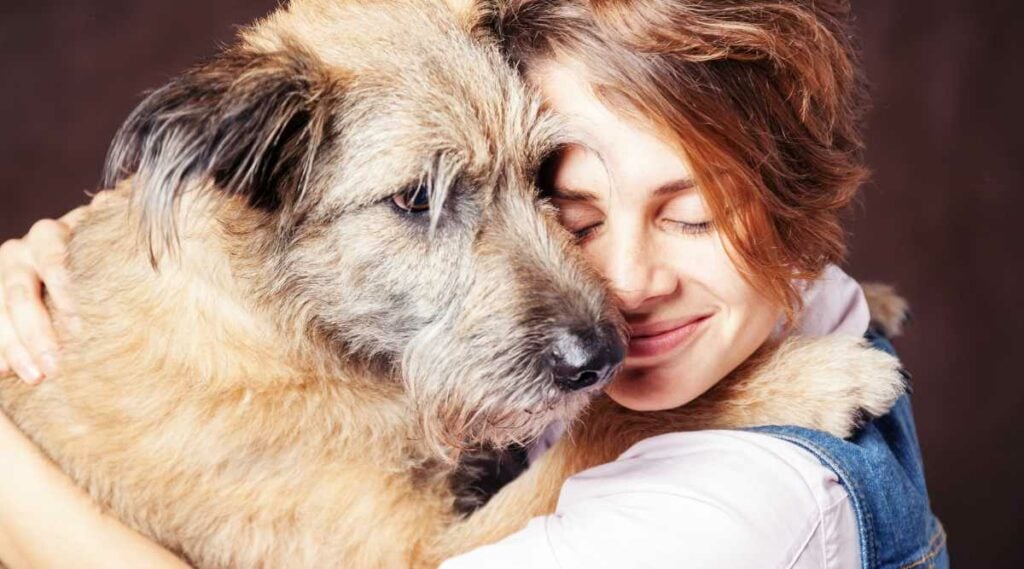
There’s more to the deep bond between women and dogs than just cute Instagram photos and an endless supply of belly rubs. Science supports the idea that women tend to form stronger emotional connections with their canine companions than men. But why? Let’s break it down.
1. The Oxytocin Factor: Love At First Wag
Oxytocin, often called the “love hormone” or “bonding hormone,” plays a crucial role in human relationships, including those between women and their dogs. This hormone is released during moments of emotional connection, like when a mother looks at her baby or when a woman locks eyes with her dog.
Studies show that when women pet, cuddle, or even just gaze into their dog’s eyes, both the female and the dog experience a measurable rise in oxytocin levels. This biological feedback loop strengthens their bond, creating a cycle of love and attachment similar to the one seen between parents and infants.
For women, this connection can feel just as deep as any human relationship. Dogs, in turn, respond with loyalty, affection, and a sense of security. This reinforces the idea that their owner is their primary source of love and comfort.
2. Women Are More Emotionally Attuned
Women, on average, have a higher capacity for emotional intelligence than men. This means they’re generally better at recognizing, interpreting, and responding to emotions – whether they come from another human or a four-legged companion.
Dogs rely heavily on nonverbal communication, using body language, facial expressions, and vocalizations to express their needs and feelings. Women tend to be more attuned to these cues, making them more effective at understanding when a dog is anxious, excited, or in need of comfort.
Studies suggest that women are also more likely to respond to their dogs with emotional expressions of their own, which dogs can read and interpret. This two-way emotional communication strengthens the bond, making the relationship feel intuitive and effortless.
3. A Nurturing Instinct At Play
Women have long been seen as natural caregivers, a role shaped by both biology and social conditioning. Whether caring for children, partners, or friends, women often take on the responsibility of emotional and physical well-being.
This nurturing instinct extends to pets as well. Women are more likely to ensure their dogs receive proper medical care, the best food, comfortable bedding, and an overall high quality of life. They often talk to their dogs in a soothing tone, check in on their feelings, and provide reassurance when their pets are scared or anxious. For many women, their dog isn’t just a pet; they are a beloved family member deserving of love and protection. This deep-rooted caregiving mentality fosters an intense bond between them.
4. The Way Women Talk To Dogs Matters
If you’ve ever heard a woman talking to her dog in a voice that sounds eerily similar to how she might address a baby, there’s a scientific reason behind it. Studies have shown that dogs respond more positively to high-pitched, melodic voices – similar to how infants react to “baby talk.” Women naturally tend to use this kind of speech when interacting with their pets, known as dog-directed speech (DDS). This includes exaggerated tones, affectionate words, and simplified sentences like, “Who’s a good boy?” or “Are you hungry?”
Dogs not only enjoy this type of communication, but they also find it easier to understand. The higher pitch and slower pace help them differentiate commands and emotions, reinforcing the strong emotional connection between a woman and her pup. Studies have shown that puppies, particularly, are more responsive to DDS, as it helps them focus and process information more effectively.
Even adult dogs exhibit increased engagement when spoken to in this way, tilting their heads, wagging their tails, and responding more enthusiastically to commands given in a high-pitched, affectionate tone. This kind of speech also mimics how dogs naturally communicate with each other through vocal variations, body language, and emotional cues. This makes interactions with their human companions feel more intuitive and rewarding.
More Research On Why Dogs May Prefer Women’s Voices
Much research has been done in this area, with some interesting results. A recent study by Hungarian researchers at the Department of Ethology, Eötvös Loránd University, the Research Centre for Natural Sciences, and the Eötvös Loránd Research Network used MRI technology to learn more about how dogs process human dog-directed speech. They tested it with men’s and women’s voices. Dogs responded more to DDS and speech directed at children than adult-to-adult-directed speech.
The dogs were more sensitive to dog and infant-directed speech when the speaker was a woman. Responses were affected by pitch variation. In infants, a preference for a female and higher-pitched speech is attributed to intrauterine exposure to women’s voices as well as ancient responsiveness. In dogs, this cannot explain the preference for the female voice. Researchers conclude that dogs have a higher sensitivity to DDS from women and attribute it to the exaggerated prosody (patterns and rhythms) typical in female speech.
5. Dogs Thrive On Attention & Women Give It More Freely
Dogs are social creatures that crave attention, and women tend to be more willing to provide it. Whether it’s through petting, talking, cuddling, or playing, women often spend more one-on-one time engaging with their dogs than men do. Is that because more women are stay-at-home parents than men and naturally spend more time with them? It’s not clear. But more often than not, women spend more time with their dogs.
Research shows that women are more likely to involve their dogs in daily routines – bringing them along for errands, taking them on trips, and even incorporating them into social activities. This constant interaction creates a strong emotional dependency, making the dog feel secure, loved, and attached to their owner. Women are also more likely to celebrate their dog’s milestones, such as birthdays or adoption anniversaries. This reinforces the idea that their dog is not just a pet but a treasured companion.
6. Women Are More Likely To View Their Dogs As Family
While both men and women love their pets, women are more likely to view their dogs as full-fledged family members. This affects everything from household decisions to daily routines. Research has found that women were more likely to refer to their pets as their “babies” or “children.” This mindset influences everything, from allowing dogs to sleep in the bed to prioritizing their comfort and happiness over personal convenience.
Because of this deep emotional investment, women are also more likely to feel genuine heartbreak when their dog is sick, injured, or passes away. They grieve their pets as they would a close friend or family member, further demonstrating how significant the relationship truly is. Watch this dog mom in action, protecting her pups at all costs.
So, Do Dogs Prefer Women To Men Caretakers?
There is no way to truly tell this, as all animals are different. In many cases, dogs bond with their primary caretaker, children, or people who shower them with attention. Dogs are mainly attracted to a type of behavior rather than a specific gender. They like calm, gentle movements, soft vices, and people who do not make them feel afraid or intimidated. Women and children tend to fit that description more than men. That does not mean, though, that dogs prefer one to the other. They can form a special relationship with any caring owner that treats them well.
The Mom & Dog Dynamic: A Nurturing Bond Backed By Science
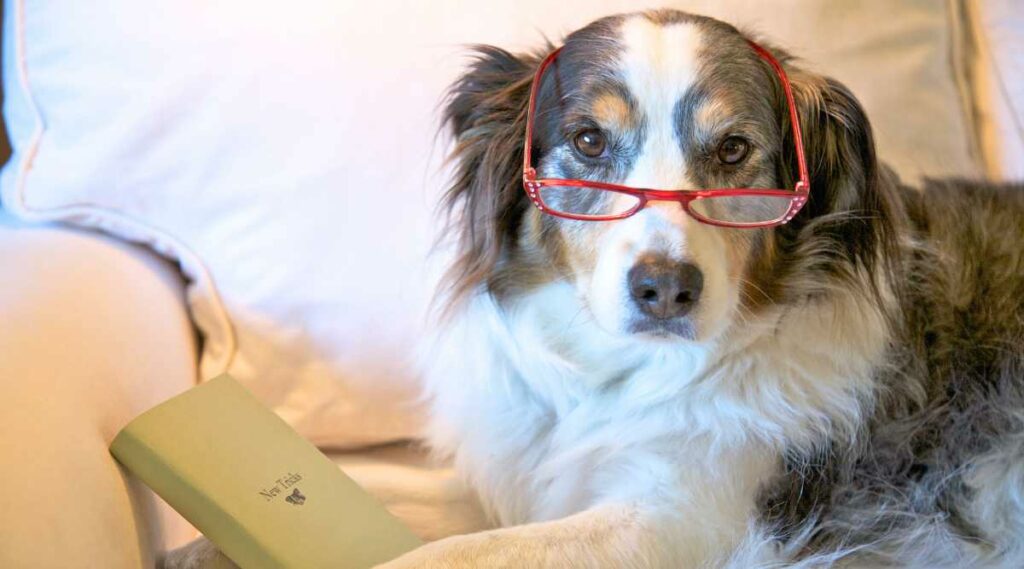
The strong connection between mothers and their dogs isn’t just a product of affection – it’s rooted in behavioral science and social learning. As I’ve already uncovered, various studies suggest that mothers’ caregiving behaviors toward their infants are often extended to their dogs, reinforcing a deep emotional bond. In turn, dogs respond to this nurturing dynamic by mirroring behaviors that align with family caregiving, integrating themselves into the role of protectors, comforters, and even babysitters.
Dogs Learn From Human Social Cues
Dogs are exceptional at reading human emotions and behaviors. Studies have shown that they engage in social referencing, meaning they look to their human companions for cues on responding in various situations. One study published in Animal Cognition found that dogs follow their owner’s gaze and adjust their behavior based on their owner’s emotional reactions. This suggests that dogs pick up on maternal behaviors, especially in households with young children, and learn how to respond accordingly.
Dogs As Baby Guardians: The Canine Caregiver Effect
Some mothers report that their dogs act as secondary caregivers, often behaving like live-in baby monitors. This anecdotal evidence is supported by research on attachment theory, which shows that dogs form secure bonds with their owners and recognize their role in family dynamics. In some cases, dogs even seem to develop a protective instinct toward infants and toddlers.
A study published in Frontiers in Psychology found that dogs display a heightened sense of vigilance around vulnerable family members, particularly babies. This behavior can manifest as staying close to the child, alerting parents when the baby cries, or even gently nudging a toddler to prevent falls. Dogs are known to positively impact children with special needs, such as autism.
Positive Reinforcement Strengthens The Bond
Positive reinforcement plays a huge role in why dogs continue these caregiving behaviors. When a dog responds gently to a child, whether by lying near a napping baby or tolerating a toddler’s clumsy affection, they often receive verbal praise, treats, or physical affection from their owners. This cycle of reward strengthens their inclination to act as caretakers.
Dogs also thrive on predictability and routine, so when they see that their involvement in child-rearing leads to positive attention, they naturally continue to engage in those behaviors. This is why some dogs nudge a mother when the baby wakes up, stand guard near a crib, or patiently let a toddler use them as a balance aid when learning to walk.
A Relationship Built On Trust
Ultimately, the bond between mothers, children, and dogs is built on trust, familiarity, and positive reinforcement. Dogs, being highly social animals, naturally integrate into the caregiving structure of a household, responding to the emotional cues and behaviors of their human family members. From watching over a sleeping baby to helping toddlers find their balance, dogs seamlessly weave themselves into family life. In the process, they earn love, treats, and a lifelong place in the hearts of their human companions.
The Rise Of The ‘Dog Mom’ Culture

In recent years, the concept of being a “dog mom” has exploded, fueled by social media, shifting pet parenting trends, and changing lifestyles. No longer just “pet owners,” women across the world now fully embrace their dogs as family members, giving rise to an entire culture centered around pet parenting. From birthday celebrations to gourmet homemade meals, dog moms are redefining what it means to care for a canine companion.
This cultural shift has been driven by several factors, including the increasing number of women choosing to delay or forgo traditional milestones like marriage and motherhood. For many, dogs provide companionship, emotional support, and even a sense of purpose. The rise of pet-friendly workplaces, dog-welcoming businesses, and luxury pet services has further cemented the role of dogs as full-fledged family members.
Social media has played a massive role in the dog mom phenomenon, showcasing a world where women treat their dogs to spa days, professional photoshoots, and custom wardrobes. Platforms like Instagram and TikTok are filled with dog accounts boasting thousands (or even millions) of followers, proving that people love engaging with content centered around adorable, pampered pups. Viral trends, such as “gotcha day” celebrations, elaborate dog birthday parties, and high-end pet accessories, have transformed pet ownership into an aspirational lifestyle.
How Women Around The World Are Championing Dog Advocacy
Beyond aesthetics and social media trends, the dog mom movement reflects a growing awareness of animal welfare and responsible pet ownership. Many women actively support rescue organizations, advocate for adoption, and educate others on proper pet care. The idea of “adopting, not shopping” has become a key message in dog mom culture, emphasizing the importance of giving shelter animals a second chance.
The pet industry has responded enthusiastically, offering everything from organic dog food and holistic wellness treatments to pet-friendly travel experiences. Women are now investing more in their dogs’ well-being, treating them as pets and beloved family members who deserve the best health, comfort, and happiness. Whether through emotional support, lifestyle integration, or social media fame, the bond between women and their dogs has never been stronger.
Canine Journal’s Personal Experiences: Women And Dogs
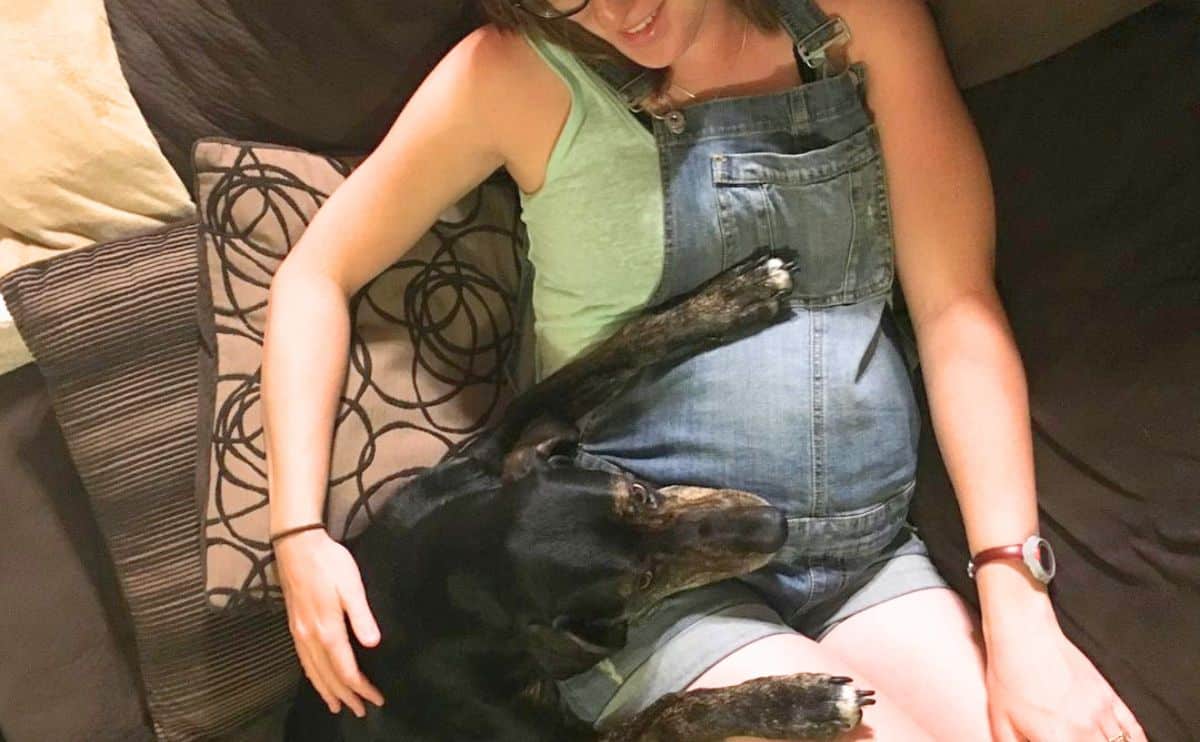
When I was pregnant, I noticed a change in my dog’s behavior. She became my shadow and started following me around everywhere. I would stumble over her at times because if I took a step back without looking, she was always there. On our walks, just the two of us, she got very vocal towards any person or dog we passed.
She’s a creature of habit, and if something is out of the norm, then she struggles with it. Immediately following the birth of both of my children, she went through a lot of anxiety and would get sick. The change in household schedule was hard on her.
She became very protective of us all as a family. I noticed her motherly nature take over as she looked over my children. I always thought she had that “new mom glow” as we strutted around the neighborhood with our new baby as she proudly trotted along with us. But don’t let that make you think she’s unaware of her surroundings. If someone steps foot in our yard while the kids are playing, she is on high alert.
Over the years, I’ve noticed the way she interacts with me versus my husband. She is more likely to listen to me the first time I say something. If she is pulling on our walks, I’m sometimes able to stop the behavior by speaking to her. Meanwhile, my husband typically must guide her back with the leash.
She’s also much more dominant with her behavior toward him. For example, she’s more likely to paw at him and invade his space than she is with me. This could be taken one of two ways. The first is that she feels more “alpha” with my husband than me. The second is that she is simply pushier with her presence toward him than me.
– Kimberly Alt, Dog Mom, Writer & Content Strategist For Canine Journal
As protectors and companions, dogs are reliable, going far beyond the call of duty to keep their pack safe.
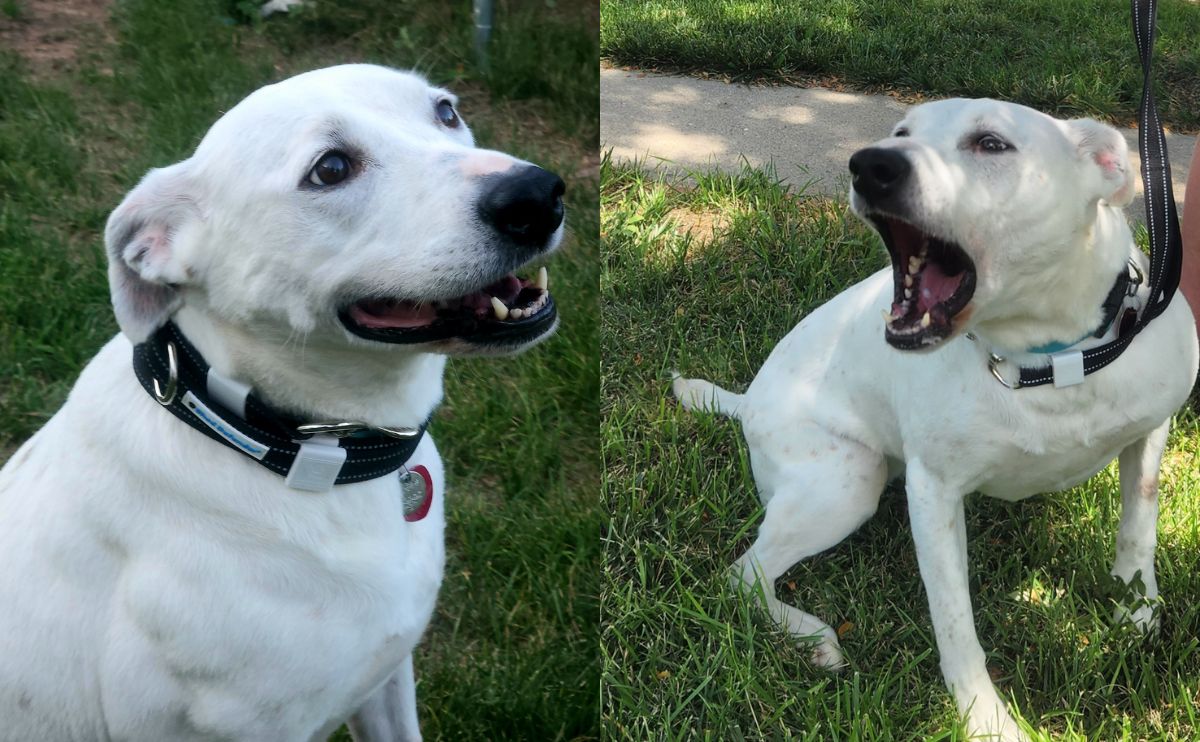
My dog Daisy, a Pitbull Labrador Retriever mix, is a rescue dog. She was found with a litter of puppies roaming the streets at about 8 weeks old. We adopted her without knowing much of her history. Daisy bonded quickly with my sons, husband, daughter, and me. However, from a very young age, and even now at 11 years old, she does not like unknown men. Most of the time, she is very sweet and docile, and we have never had an issue with her biting or attacking anyone, but she does bark loudly and aggressively. I prefer taking her to female vets simply because she is more comfortable with them.
While her barking and protectiveness can, at times, be a lot to handle, it has a positive side. I live in a big city, and as with any place, unfortunate and scary things happen. I can take Daisy and walk, hike, or bike just about anywhere I want by myself, as can my daughter. People often make room for us to walk by due to Daisy’s stocky appearance. Her presence when I am home alone makes me feel far safer than any other form of protection. I have had a larger dog for over 20 years and have always felt safer with them around.
I have, in fact, had workmen be afraid to enter my house because of her barking and have had to put her in a separate room so they could work. One man told me he had a fear of dogs, and she looked scary. While I felt bad, in a way, I was also secure in knowing that just having her with me keeps me safe, as she is a big deterrent to anyone who should not be around.
– Danielle DeGroot, Dog Mom & Writer For Canine Journal
Frequently Asked Questions
Whether you’re wondering about dogs’ protective instincts, their ability to sense hormonal changes, or why so many women proudly embrace the “dog mom” identity, these FAQs explore the deep connection between women and their four-legged companions. If you don’t see your questions below, please ask us in the comments section, and we’ll find the answer for you.
Can Dogs Sense Female Hormonal Changes?
Yes! Dogs have an incredible sense of smell and can detect hormonal changes in women, including pregnancy, menstruation, and even emotional fluctuations caused by stress. Some dogs may become more affectionate, protective, or even clingy during these times. This might explain why your dog sniffs your crotch!
Why Do Some Women Treat Their Dogs Like Children?
Many women see their dogs as family members and extend caregiving behaviors to them, similar to parenting. This can be due to biological nurturing instincts, emotional attachment, and dogs’ role as companions. The rise of the “dog mom” culture has reinforced this trend. Many women celebrate their pets’ birthdays, dress them up, and ensure they have the best possible care.
Are Women More Likely To Adopt Rescue Dogs Than Men?
Yes, studies show that women are more likely than men to adopt rescue dogs. Women often feel a strong emotional connection to animals in need and are more likely to prioritize adoption over purchasing a pet. Many shelters report that the majority of their adopters are women.
Do Dogs Protect Their Female Owners More Than Male Owners?
While a dog’s protective instincts depend on breed and personality, some dogs may show increased protective behaviors toward female owners, especially if they perceive them as their primary caregivers. Women who live alone often report that their dogs are more alert and watchful, especially at night or in unfamiliar situations.
What Dog Breeds Are Best For Women Living Alone?
This depends on a woman’s needs and personality. For women who live alone and want both companionship and security, breeds like Labrador Retrievers, Golden Retrievers, Poodles, and French Bulldogs offer affection and loyalty. For protection, larger breeds like German Shepherds, Dobermans, and Boxers provide both companionship and a sense of security.
Do Women Bond With Male & Female Dogs?
Yes, women bond with both male and female dogs. The bond is more about the specific animal and human, not about the gender of either. A dog who has experienced pain, neglect, or mistreatment will often fear the gender of the person responsible.
Ways To Bond With Your Dog
Fostering a healthy dog-human bond takes work. Dogs depend on owners for food, exercise, and care. We depend on them for companionship and emotional support. Bonding takes time, and owners must have patience. Training your dog, working on socialization, playing with doggie toys together, and going for walks are some ways. Try playing brain games, teaching your dog agility tricks, and just spending time together. Do not forget to offer your pup high-quality food, provide veterinary care, and keep your home safe, clean, and secure.
Do you and your dog have an unbreakable bond like no other? Perhaps your pooch feels closer to the males in your family? We love to hear from our readers, so please get in touch in the comments below.
Why Trust Canine Journal?
Emma is a dog mom to two rescue dogs, Bonkers and Chips. She has an incredibly strong bond with her two pups, and her husband is forever wondering why they sit with her for snuggles on the sofa. They have been through a lot together, including traveling throughout Europe, six house moves, illness, separation, and being blessed with a human sibling. Emma works with a dedicated team at Canine Journal to bring the best and most useful canine content to their readers.


